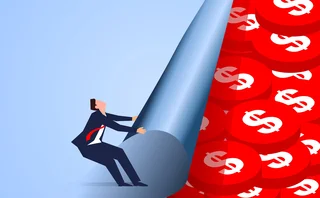
Who revived FX volatility?
The reports of FX vol death were greatly exaggerated. For now, anyway
Like traders, journalists can be superstitious.
Throughout January, as we prepared to launch FX Markets, there was a lot of buzz about our lead story – a detailed look at the hidden, structural reasons for historically low volatility in foreign exchange. No-one else had told that story properly and – even before publication – the topic was generating a lot of interest from the traders we were speaking with.
Along with the buzz, we all felt a gnawing unease. The article would be the cover story for our launch issue; we had been working on it for weeks; we were calling it “Who killed FX volatility?”
So, what if – as we were about to publish – the volatility regime suddenly switched, making our work irrelevant? The universe is full of shadowy laws whose workings are not fully documented. We were scared such a law would scupper the article.
As it happened, the low-vol regime was still intact when we published on February 24, and it quickly became the most popular article of this year, and last.
It hasn’t aged well, though. The coronavirus had already reached Iran, Italy and South Korea in mid-February, and market wobbles became a full-fledged meltdown in March. Foreign exchange was not the market primarily affected, but it was dragged into the rout.
One-month at-the-money volatility for euro/US dollar was at 5.33 on the day the article was published – by March 19, it was at 14.91. The spot EUR/USD rate was at 1.0854 – just about to rocket up to 1.145 and then back down to 1.0692 in the space of three weeks.
Suddenly, an article about the death of FX volatility looked like an artefact from prehistory.
It may become newly relevant in the months ahead. Massive liquidity support and stimulus packages have helped the financial markets through the first phase of this crisis. The second is likely to focus on the underlying economic damage – which is hard to price. There will be more volatility to come.
After that, though, with rates at rock-bottom levels across the developed world, FX may find itself becalmed once more.
As the head of FX at one large European asset manager puts it: “We have a volatility spike now and it might be here for two or three months, but the underlying environment for why volatility was low in the first place hasn’t yet changed. The volatility we’re seeing now is an event-driven spike, not a structurally driven one.”
Other market participants see it differently. The paradigm has changed, and structural forces will take a back seat to the market’s varying assessments of economic damage – and while other markets remain illiquid, FX will become the proxy hedger’s go-to tool.
One thing’s for sure: we won’t be putting a major feature about volatility regimes on the cover again. Or, probably not, anyway.
Only users who have a paid subscription or are part of a corporate subscription are able to print or copy content.
To access these options, along with all other subscription benefits, please contact info@fx-markets.com or view our subscription options here: https://subscriptions.fx-markets.com
You are currently unable to print this content. Please contact info@fx-markets.com to find out more.
You are currently unable to copy this content. Please contact info@fx-markets.com to find out more.
Copyright Infopro Digital Limited. All rights reserved.
As outlined in our terms and conditions, https://www.infopro-digital.com/terms-and-conditions/subscriptions/ (point 2.4), printing is limited to a single copy.
If you would like to purchase additional rights please email info@fx-markets.com
Copyright Infopro Digital Limited. All rights reserved.
You may share this content using our article tools. As outlined in our terms and conditions, https://www.infopro-digital.com/terms-and-conditions/subscriptions/ (clause 2.4), an Authorised User may only make one copy of the materials for their own personal use. You must also comply with the restrictions in clause 2.5.
If you would like to purchase additional rights please email info@fx-markets.com
More on Our take
Trump’s FX impact: a tale of two terms
Traders say Trump version 2.0 is already proving a much trickier task to manage than the original, and have had to adapt
Turn of the skew: FX options dealers balance fragile market
Calls-versus-puts demand flips wildly in response to geopolitical events
Banks seek to advance predictive pricing models
AI and machine learning-based tools could give FX desks the power to forecast currency movements
FX traders revel in March Madness
Chaotic Trump policies finally bring diversity to flows – to the delight of market-makers
Could LPs explore renting out their client franchise?
Connecting regional banks with sophisticated clients may see dealers evolve to become liquidity distribution hubs
Higher rates see corporates reassess FX structured products
Treasurers are getting a taste for dual currency notes and structured forwards
Quants dive into FX fixing windows debate
Longer fixing windows benefit clients, but predicting how dealers will respond is tough
Low FX vol regime fuels exotics expansion
Interest is growing in the products as a way to squeeze juice out of a flat market








